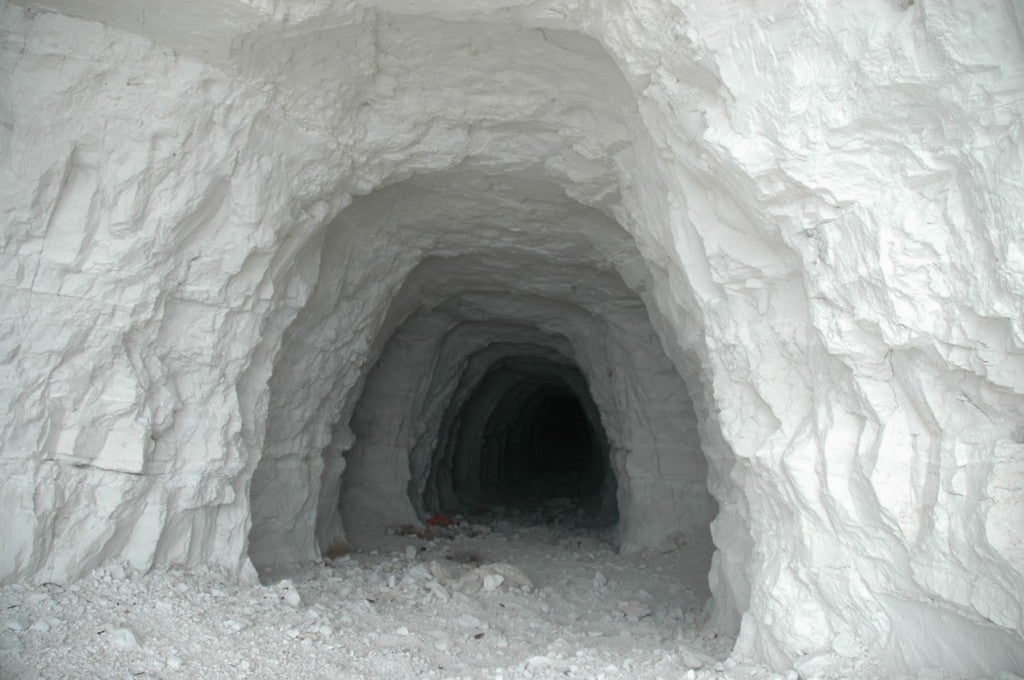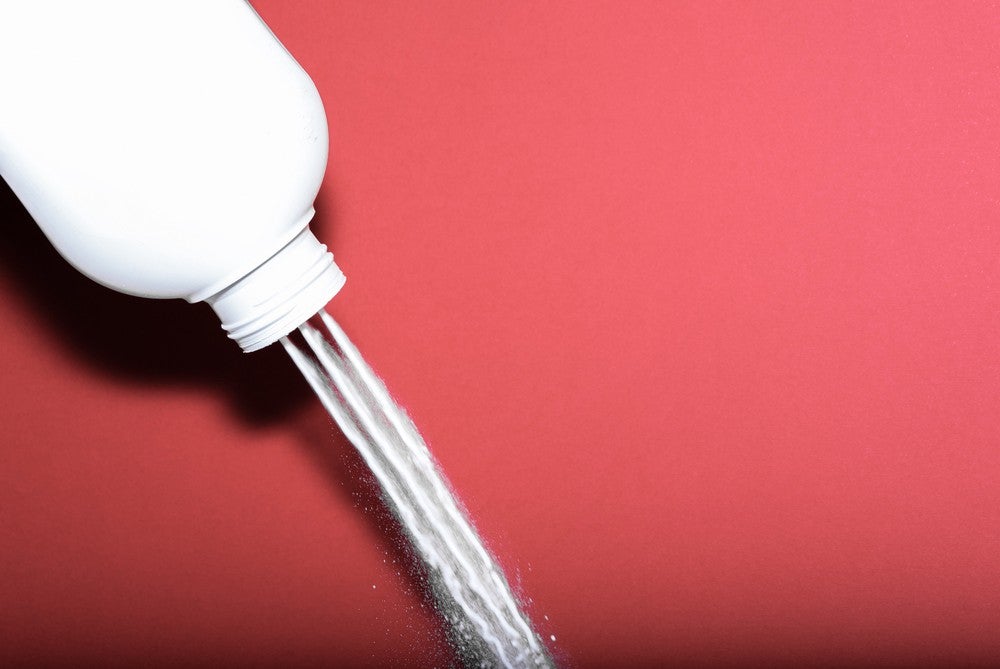Has your predilection for a powdered peen put you in penile peril?
Powdering your balls is a time-honored tradition of refined men who’d rather not walk around in a swampy mess of dick and ass sweat. A simple poof of baby powder dries up all the moisture down below, and despite making your dick look like an 18th century parliamentarian, keeps everything cool and comfortable. That is to say, everything was cool and comfortable until recently, when thousands of lawsuits sprang up regarding talc powder causing mesothelioma and ovarian cancer.
What does this mean for you, a regular yet refined gentleman who prefers his genitals as dry and powdery as excavated dinosaur bones? Let’s get into it.
Assume for a moment that I’m not a man who uses ball powder. Um… what?
Ball powder (or talc powder), man. It’s a thing. Especially for those of us who refuse to wear shorts in the summertime, a swampy crotchal area can be the source of distress: Your ball sack hangs in a pants sauna, dripping sweat and producing an atmosphere more dense than Jupiter. In the rare chance you take your pants off around someone else, that hot, wet, stanky air gets unleashed in a plume of ball and butt B.O.
Talc powder is basically hardcore antiperspirant for your nuts, soaking up all that scrotal moisture and stopping your groin from smelling like an old leather glove full of past-their-sell-by-date grilled onions.
Well, that just sounds delightful, but what exactly is talc powder?
Talcum, the primary ingredient in baby powder, is actually a mined mineral, and one of the softest minerals in the world. It contains three primary ingredients: Magnesium, silicon and oxygen. Here’s what a talc mine looks like:

Mmm look at all that sweet, sweet ball powder. But before you roll your nuts around in it, know that all mixed up in that pile is (probably) a shit-load of asbestos. And that’s where things get hairy for talc: As a naturally occurring mineral, it happens to naturally be contaminated with asbestos, the super-cancer-causing carcinogen you know and love from the mesothelioma commercials:
So it’s the asbestos in talc that causes cancer, then?
Yes, but it’s more complicated than that. “In its natural form, some talc contains asbestos, a substance known to cause cancers in and around the lungs when inhaled,” the American Cancer Association notes, but adds, “All talcum products used in homes in the United States have been asbestos-free since the 1970s.” (As you’ll see later, several lawsuits argue that talc companies were a little shady regarding this claim.) Thus, the ACA urges to split talcum powder into two categories: That which contains asbestos, and that which does not.
According to Drugwatch, a website that tracks the legal issues of drug companies, “The majority of talcum powder mesothelioma claims come from exposure to industrial talc used in products such as ceramics, plumbing and paint.” So if you find yourself out of breath in an unrefined talc factory, you’ve got a decent chance of getting cancer.
What about asbestos-free talc?
Even in commercial, purified talcum, the long and short of it is (as with almost anything that may or may not cause cancer), “Maybe.” Basically, there isn’t enough evidence to definitively say yes or no. Of the American Cancer Association, International Agency for Research on Cancer and National Toxicology Program, all three are pretty wishy-washy on talc, regardless of asbestos contamination. Even without asbestos, given “the weight of the available evidence,” they say, “there’s no definitive answer that it is not cancerous.” So just like laying a hot laptop on your nuts or eating charred burgers, cancer is all around us.
The talcum lawsuits are reminiscent of what we went through with Big Tobacco. When representing plaintiffs suing Johnson & Johnson, attorney Chris Panatier accused the company of hiding test results from the FDA and altering reports to make them more favorable to consumers. Just like with cigarettes, plaintiffs argue, if there’s a non-zero chance of a causal connection between talc and cancer that the companies know about, they should therefore place warning signs on their products.
In response, the drug companies argue that sure, maybe there’s a correlation, but that doesn’t mean causation.
That said, the majority of lawsuits regarding talcum powder are about ovarian cancer. According to Drugwatch, as of July 2018 there were 8,205 lawsuits regarding talcum powder and ovarian cancer, and more than $5 billion rewarded in settlements to women who’ve claimed they developed ovarian cancer after routinely using talcum powder. The companies who make the stuff consistently appeal these verdicts, urging that research and science isn’t strong enough to suggest their products are at fault.
Overall, since the limited science available suggests it both does and does not cause cancer, the whole issue is a mess. For now then, let’s bring the focus back to you and your swampy nuts.
Yes, please. As a bonafide Regular Guy Without Ovaries, am I in the clear?
With the caveat that cancer is literally everywhere and death is inevitable… yes? In comparison to the 8,000 lawsuits regarding ovarian cancer, only two lawsuits were filed in February 2018 regarding talcum powder and mesothelioma. One of those cases involved an employee of an industrial talcum powder factory. The other involved Stephen Lanzo III, who in April was awarded $117 million by successfully arguing he developed mesothelioma after using Johnson & Johnson’s talcum powder products for 30 years. It was the first of its kind, and Johnson & Johnson is vehemently appealing the decision.
So that’s one lawsuit within the decades of men powdering their nuts with talcum powder and not getting cancer. Don’t throw all your talcum powder in the trash just yet.
Assuming you’re not a talc miner, the (again limited) research has shown no increased risk of lung cancer with commercial talc, according to the ACA. Additionally, a 1994 review of studies done on talcum powder found the studies “do not provide any convincing evidence that pure cosmetic talc, when used as intended, presents a health risk to the human consumer.”
The same goes for avoiding talcosis, i.e., a buildup of talc powder in the lungs that’s been reported in women who “dusted the whole body with talc at least once daily and the talc had been applied in a small unventilated room likely to favour inhalation.” As with anything, moderation is key.
Basically, if you’re hellbent on keeping your balls dry, don’t create a giant cloud of talcum powder in your unventilated bathroom, and don’t use talcum powder from 30 years ago. If you want to keep using talc, for safety’s sake, keep the powder in your pants, and your peen will hopefully be properly pampered without side effects. One recent advancement in talc technology that helps in moderation is pressurized aerosol talc, which prevents a giant cloud of talc from forming, and between you and me, there’s nothing quite like really blasting your hot butthole with an ice cold shot of talc mixed with menthol to keep your summer fresh.
Still, if all the uncertainty makes you paranoid, there are a ton of safer (albeit less effective) alternatives out there, like cornstarch and other more organic powders. Just don’t come to us when your significant other discovers you hastily dipping your sweaty nuts in the refrigerator baking soda.

